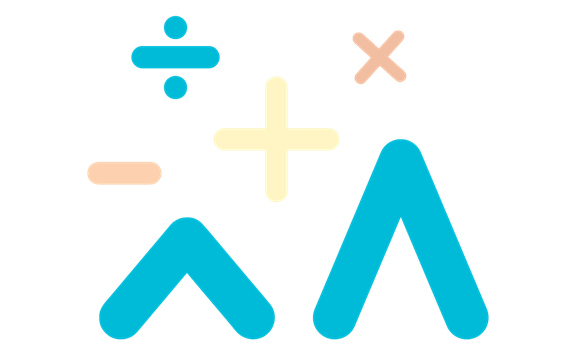
Understanding the Three Types of RESPs
Would you like to support your child or the child of a friend or relative in their pursuit of post-secondary education? The Registered Education Savings Plan is an essential investment vehicle, since it allows you to accumulate tax-free returns while receiving generous government grants. These grants can be as high as $12,800 in Quebec and $9,200 in New Brunswick,1 depending on family income. The government grants also generate tax-free returns. So the question is not whether a RESP is a good tool, but rather which one to choose.
The various types of RESPs
There are three types of education savings plans: family, individual and group. While each has its advantages and disadvantages, they are all eligible for government grants.
Family RESPs
Parents who enrol in a Family Education Savings Plan have the flexibility to name more than one beneficiary, as long as they are all related by blood or adoption and are under the age of 21. The main advantage of this type of RESP is how easy it is to distribute the amounts among the beneficiaries and add children as the family grows. If one of the children does not pursue post-secondary education, the other beneficiaries will simply be able to take advantage of the amount accumulated in the plan.
The Family RESP allows for withdrawals once the eldest beneficiary begins post-secondary education. Be aware, however, that as soon as the eldest beneficiary receives an education assistance payment (EAP), the Quebec Education Savings Incentive (QESI) for other beneficiaries may be affected. This grant is based on the net amount of the contributions, and this can be disadvantageous when a deposit and a withdrawal are made in the same year. Here are some concrete examples:
| Family RESP deposit and withdrawal scenarios in a given year | Grant from the Government of Quebec (QESI)2 |
|
Contribution: $5,000 EAP withdrawal: $5,000 Net contribution: $0 |
None |
|
Contribution: $5,000 EAP withdrawal: $2,500 Net contribution: $2,500 |
$250 |
|
Contribution: $5,000 EAP withdrawal: $1,500 Net contribution: $3,500 |
$250 |
Individual RESPs
In this type of RESP, the subscriber can name only one beneficiary at a time, and the beneficiary does not have to be related to the subscriber. This type of RESP is easy to track over the years because each beneficiary has a separate account. It also offers the possibility of naming a beneficiary over the age of 21.
Many people are unaware that it is usually possible to change the beneficiary of an individual RESP at any time. If the original beneficiary of the plan does not pursue post-secondary education, you may be able to name a new beneficiary to whom the government grants will be transferred under certain conditions.
Beware, however, of excess contributions if the new beneficiary already has an RESP! And be aware that the Canada Learning Bond (CLB), a grant available to low-income families, cannot be shared between different recipients.
The new line of IDEO+ RESPs allows you to choose when and how much3 you invest in education savings. This line of no-load individual RESPs is available in three investor profiles: IDEO+ Conservative, IDEO+ Adaptive and IDEO+ Responsible. Contact a representative for more information on the IDEO+ line of RESPs.

This simple tool will help you calculate how much your child’s postsecondary education could cost.
Takes about 5 min.
Group RESPs
A group RESP is the other option for contributing to the plan of one or more children with whom you are not necessarily related by blood. In this type of plan, the subscriber’s contributions are pooled with those of other members of the same cohort, which is made up of children born in the same calendar year.
Each group plan is different and has its own rules. Usually, the subscriber must commit to contributing a certain amount of money on a regular basis according to a specific schedule. There may be a fee if you forget to make a contribution or are not financially able to do so!
If you withdraw from the group RESP before your beneficiary enrols in a post-secondary program, you will not be entitled to returns on your investments. And if the beneficiary decides not to pursue post-secondary education, the investment earnings that would have been due to him or her will be redistributed among the other beneficiaries in the group plan.
Download our checklist now to differentiate the types of RESPs at a glance.
Enhancing an RESP through grants
The Quebec provincial government offers the Quebec Education Savings Incentive (QESI). This is a grant paid directly into the beneficiary’s RESP. The amount paid is 10% of annual contributions, up to a maximum of $250. For example, if a subscriber contributes $2,000 to an RESP in a given year, the government will contribute $200. This amount can be increased by $50 for low-income families.
At the federal level, you can benefit from the Canada Education Savings Grant (CESG). This is equal to 20% of the annual contributions made, up to a maximum of $2,500. For example, if $3,000 is contributed to a child’s RESP, the CESG will be capped at $500, which is 20% of the maximum grantable. An additional CESG and Canada Learning Bond (CLB) are available for low-income families. The Government of Canada provides an online document summarizing all eligibility criteria.
At Kaleido, we look after submitting all the grant applications that your beneficiary is entitled to once you have opened your RESP. This ensures that you don’t leave any money on the table!
How do I receive the Education Assistance Payment (EAP)?
As the subscriber, you are the one who will make decisions on RESP withdrawals and distributing the amounts throughout your child’s school career. Made up of grants and returns on contributions and grants, the EAP is taxable to the beneficiary. To receive the EAP, a student must present proof of enrolment in an eligible post-secondary education program and meet the criteria of his or her plan sponsor. For your part, you will be able to disburse the capital invested, in whole or in part, according to your needs and without being taxed.
Several disbursement strategies are possible, and each case is unique. It is therefore best to engage the support of a scholarship plan representative in order not to exceed the maximum withdrawal per year and to avoid paying taxes unnecessarily or losing grants.
If a child decides not to pursue post-secondary education, your contributions will be refunded. The grants will be repaid to the government unless you can transfer the RESP to another beneficiary or to your RRSP.
Beyond choosing the right type of RESP, the key to success in education savings is to start as early as possible! In addition to offering a range of flexible RESPs, Kaleido provides family support that includes many privileges which are free or discounted.4 Contact us today to learn more.
1. Canada Education Savings Grant (CESG) of 20 to 40% and Quebec Education Savings Incentive (QESI) of 10 to 20%. Based on adjusted family net income. The maximum annual CESG payment is $600, and the maximum annual QESI payment is $300. The maximum lifetime CESG and QESI payments per beneficiary are $7,200 and $3,600, respectively. Canada Learning Bond (CLB) of up to $2,000 per beneficiary for a child born after December 31, 2003, and whose family is financially eligible. Certain conditions apply. Check out our prospectus at kaleido.ca.
2. The annual grant paid is 10% of net contributions, up to a maximum of $250. The scenarios presented do not take into account additional amounts that may be added based on income.
3. Minimum contribution of $10 for IDEO+ Conservative, IDEO+ Adaptive and IDEO+ Responsible plans. Check out our prospectus at kaleido.ca.
4. Certain conditions and limitations apply. Promotions, benefits and other advantages of our family accompanying services are subject to change without notice and may not be available in certain areas.



